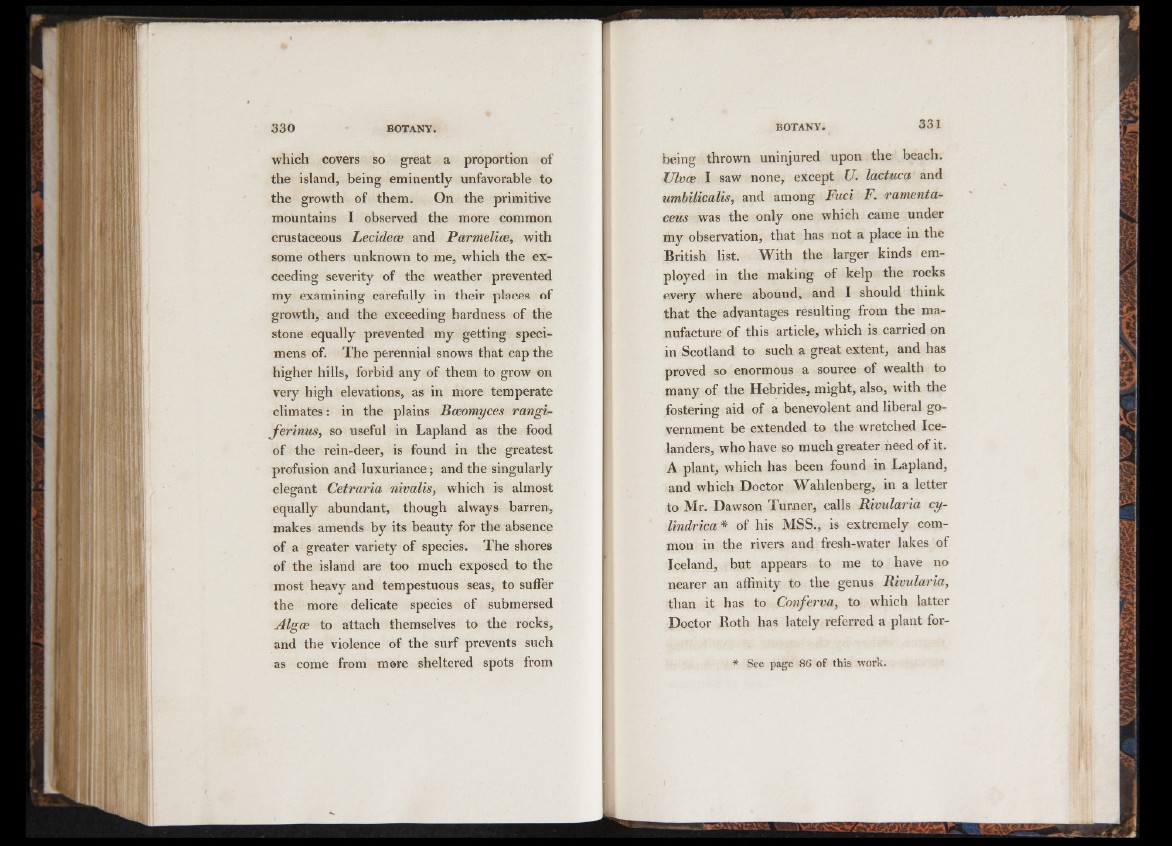
which covers so great a proportion of
the island, being eminently unfavorable to
the growth of them. On the primitive
mountains I observed the more common
crustaceous Lecidece and Parmelice, with
some others unknown to me, which the exceeding
severity of the weather prevented
my examining carefully in their places of
growth, and the exceeding hardness of the
stone equally prevented my getting specimens
of. The perennial snows that cap the
higher hills, forbid any of them to grow on
very high elevations, as in more temperate
climates: in the plains Bceomyces rangi-
ferinus, so useful in Lapland as the food
of the rein-deer, is found in the greatest
profusion and luxuriance; and the singularly
elegant Cetraria nivalis, which is almost
equally abundant, though always barren,
makes amends by its beauty for the absence
of a greater variety of species. The shores
of the island are too much exposed to the
most heavy and tempestuous seas, to suffer
the more delicate species of submersed
Algae to attach themselves to the rocks,
and the violence of the surf prevents such
as come from more sheltered spots from
being thrown uninjured upon the beach.
Ulvce I saw none, except U. lactuca and
umbilicalis, and among Fuel F. ramenta-
ceus was the only one which came under
my observation, that has not a place in the
British list. With the larger kinds employed
in the making of kelp the rocks
every where abound, and I should think
that the advantages resulting from the manufacture
of this article, which is carried on
in Scotland to such a great extent, and has
proved so enormous a source of wealth to
many of the Hebrides, might, also, with the
fostering aid of a benevolent and liberal government
be extended to the wretched Icelanders,
who have so much greater heed of it.
A plant, which has been found in Lapland,
and which Doctor Wahlenberg, in a letter
to Mr. Dawson Turner, calls Rivularia cylindrical
of his MSS., is extremely common
in the rivers and fresh-water lakes of
Iceland, but appears to me to have no
nearer an affinity to the genus Rivularia,
than it has to Conferva, to which latter
Doctor Roth has lately referred a plant for-
* See page 86 of this work.